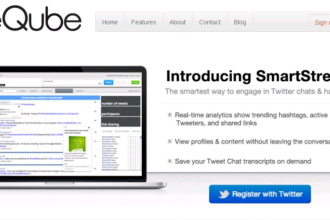 I’ve been in the healthcare delivery business now for 30 years and I can confidently say we’ve paid almost no attention to design. Systems are built around physicians’ desires and workflows, and physicians tend to be quantitative, content-focused and able to handle multiple variables at once.
I’ve been in the healthcare delivery business now for 30 years and I can confidently say we’ve paid almost no attention to design. Systems are built around physicians’ desires and workflows, and physicians tend to be quantitative, content-focused and able to handle multiple variables at once.
 I’ve been in the healthcare delivery business now for 30 years and I can confidently say we’ve paid almost no attention to design. Systems are built around physicians’ desires and workflows, and physicians tend to be quantitative, content-focused and able to handle multiple variables at once. Perhaps that is why we have not put a premium on design. As we get closer to a world where we are engaging patients in their own health outcomes, design will be much more critical.
I’ve been in the healthcare delivery business now for 30 years and I can confidently say we’ve paid almost no attention to design. Systems are built around physicians’ desires and workflows, and physicians tend to be quantitative, content-focused and able to handle multiple variables at once. Perhaps that is why we have not put a premium on design. As we get closer to a world where we are engaging patients in their own health outcomes, design will be much more critical.
I am not talking about designer drugs — using highly specific molecules based on genetic signatures to attack cancers and the like — which are truly amazing. I also saw one of the first real-world examples of designer organs that I’m aware of recently where a toddler born without a trachea had a transplant of a plastic tube lined with her own cells grown in the lab.
Rather, I’m talking about design in systems used for day-to-day delivery of care. First, a couple of examples where design is wanting: A little over a year ago, Medicare put in place a payment rule that penalized hospitals if a patient is readmitted within 30 days of discharge for the same condition. CMS published a listing of what these penalties might be, based on the readmissions rates of each hospital the year before. It is a 59-page PDF file. The information is all there, but the design leaves a lot to be desired. By contrast, the folks from Health Recovery Solutions took the same information and presented it in a much more digestible way at checkmypenalty.com. Here you enter your hospital’s name and get a clear, one-page output that visually shows your exposure on readmissions, which can be understood at a glance.
The second example is the Blue Button initiative. A bold and exciting move by the Department of Veteran’s Affairs, the idea is that clicking on a blue button on a web page allows a Veteran to download his or her health information. The downside, at least in the beginning, was that the resulting file was an ASCII text file. This file format combined with the ‘medical-ese’ made for a rendering that was less than ideal for the Vets.
At the Center for Connected Health, we strive to bring healthcare into the day-to-day lives of patients as a continuous function. In doing so we’ve discovered that small design principles can make a big difference. To illustrate this, I first want to point out the relationship between engagement and outcomes. This is best illustrated in a study we published (J Diabetes Sci Technol 2012;6(6):1328-1336) on our Diabetes Connect program. In this particular paper we observed that patients who upload their glucometer readings more frequently have better outcomes. Likewise, if a primary care practice enrolls patients in the program, those that upload earliest after enrollment do better. Our interpretation is that patients who care enough to test their glucose early and often probably pay close attention to other aspects of their care (diet, exercise, medication adherence) and thus frequency of glucometer uploads is a proxy for adherence.
Here’s an analogy for you. If you shop at Amazon or Apple, you see different designs that decrease the friction of commerce (one-click purchasing or mobile in-store purchasing) in order to motivate sales. It is just easier to shop with these two vendors than many others. Likewise, if we know that frequency of uploads predicts better outcomes, we should design our programs to make it easier for patients to upload.
We had a chance recently to compare the same to variables noted above (time to first upload and frequency of uploads) using two different in-home data-gathering hubs. In one case, patients had a phone-modem-based solution where they had to plug their sensor into the modem and push a button to upload. In the second case, using a wireless device, they had only to plug the glucometer in with a cable (skip pushing the button). The results of this comparison were impressive. The design which did away with pushing the button was correlated with earlier time to first upload and more frequent uploads over time – both were statistically significant. (J Diabetes Sci Technol 2013;7(3):623–629)
Sometimes what seem like simple design tweaks make a big difference.
We have a long way to go. That also means there is great opportunity for those in the information design community to have a profound effect on the quality of healthcare delivery. In the U.S., where the price-to-quality ratio of healthcare delivery is embarrassing, that should result in exciting, improved outcomes.







_5_1-250x220.jpg)
